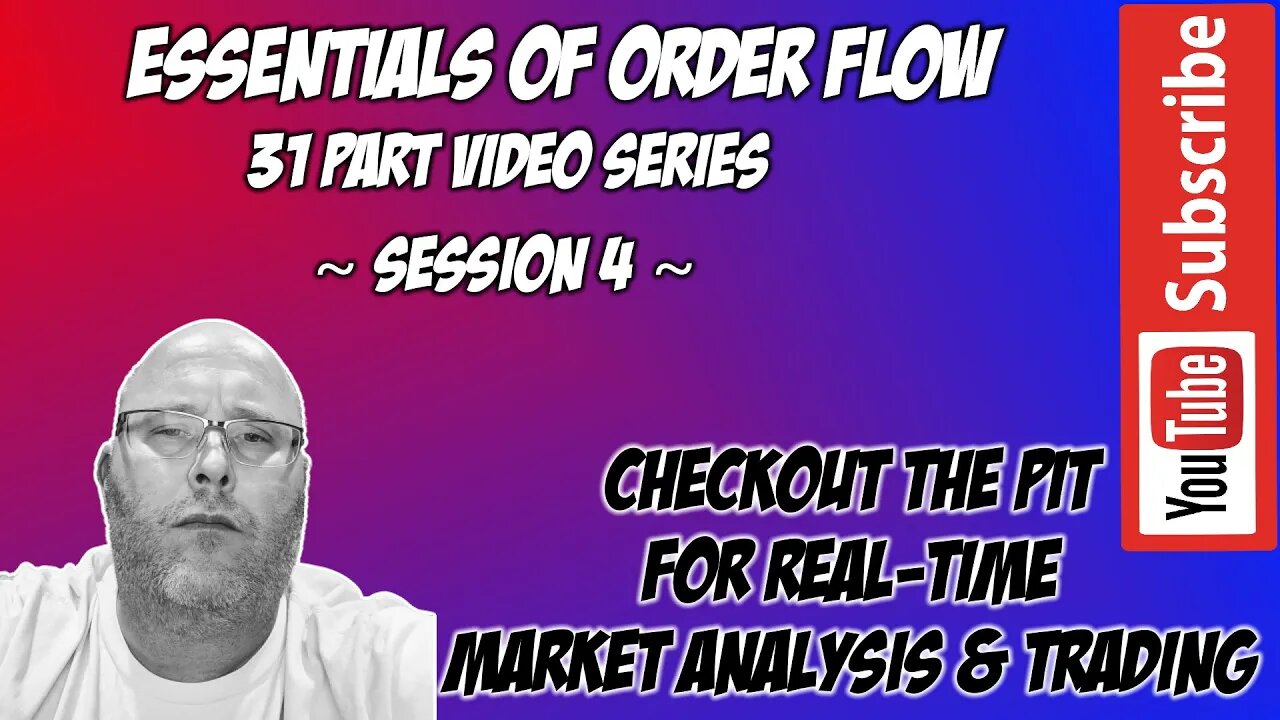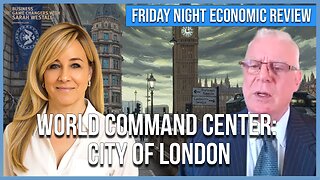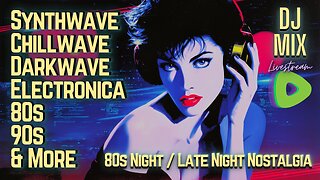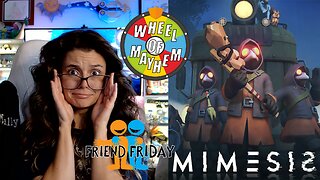Premium Only Content

The Footprint - Dynamic Areas of Interest and Order Flow - Session V - The Pit Futures Trading
#orderflowtrading #daytradingfutures #futurestrading
To this point we have carried over LVNs from the VbP charts, areas from the previous trading day’s OHLC and have been market out. The current evening session open is marked.
I now plot a VbP histogram for the current session on the 60Min Footprint chart. This is aligned to the right side. It is based on the current session and its being updated with every trade. Next, I will plot the Bollinger Band indicator on the Footprint. This is plotted based on a 20 period look back with the 2nd and 3rd Standard Deviation outer bands.
Points to be aware of:
I. LVNs, previous OHLC and Evening Open are static reference points. We will lean on these for the first decision points to execution.
II. Price, Bollinger Bands, and Session VbP are dynamic.
We discussed VbP at length previously and the same analysis applies to the VbP on the current 60Min Footprint chart. The focus needs to shift to Bollinger Bands. The Bollinger Bands plot out bands based on volatility of price action. Upper and Lower bands are 2 and 3 standard deviations from the average. The reference basically tells us that 95% of trading activity has occurred below the 2nd standard deviation and 97.5% beneath the 3rd standard deviation. The width of the bands will widen or narrow based on the volatility of price. The bands are a dynamic study.
To this point we have identified static areas and dynamic indicators. Our trade criteria should unfold along the lines of waiting for price to reach one of our static areas and being over extended based on Bollinger Band extremes.
-
 1:29:13
1:29:13
Sarah Westall
3 hours agoThe City of London: Infiltration, Intimidation & Centralized Power w/ Mike Harris
19.5K7 -
 10:14:18
10:14:18
Dr Disrespect
13 hours ago🔴LIVE - DR DISRESPECT - ARC RAIDERS - AGAINST ALL DANGER
175K24 -
 32:09
32:09
ThisIsDeLaCruz
1 day ago $0.01 earnedFalling In Reverse: Christian Thompson’s Stage Tech Revealed
17.1K2 -
 LIVE
LIVE
SynthTrax & DJ Cheezus Livestreams
1 day agoFriday Night Synthwave 80s 90s Electronica and more DJ MIX Livestream 80s Night / Late Night Nostalgia
399 watching -
 4:05:52
4:05:52
Nerdrotic
8 hours ago $0.18 earnedHollywood REGRET | Disney's Predator | The Feminist Avengers - Friday Night Tights 379
53.6K15 -
 2:36:22
2:36:22
Mally_Mouse
4 days agoFriend Friday!! 🎉 - Let's Play! - MIMESIS
23K2 -
 41:20
41:20
MattMorseTV
5 hours ago $0.39 earned🔴Schumer just BACKSTABBED his OWN VOTERS. 🔴
26.2K56 -
 3:33:34
3:33:34
MissesMaam
5 hours ago*Spicy* Friend Friday with Mally_Mouse!! 💚✨
10.5K3 -
 57:44
57:44
Candace Show Podcast
5 hours agoBen Shapiro Is Crying Again. | Candace Ep 261
58.5K206 -
 4:13:24
4:13:24
megimu32
4 hours agoOFF THE SUBJECT: MEMESIS w/ MALLY MOUSE | MISSES MAAM | SAVAGEJAYGATSBY
5.45K2